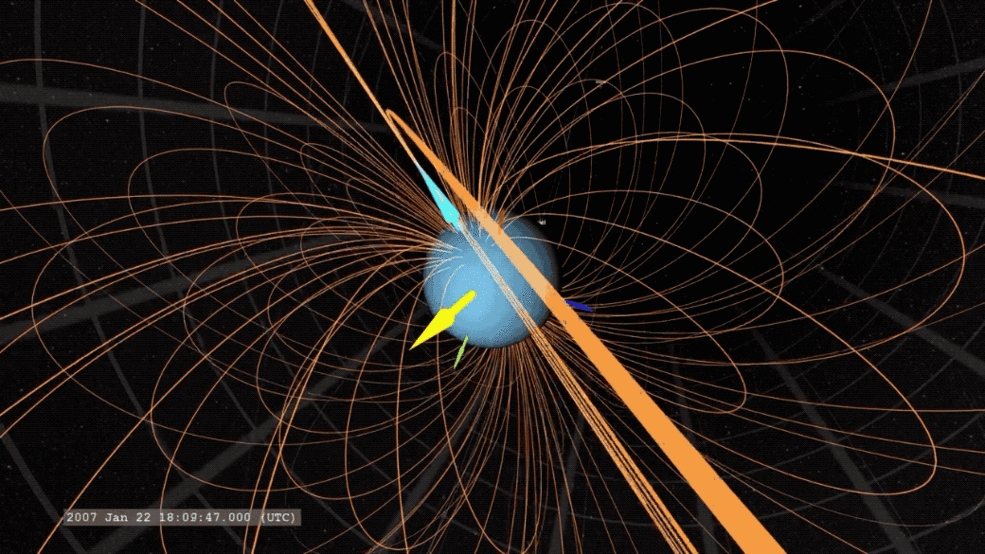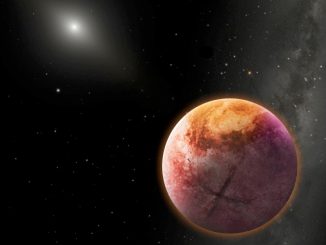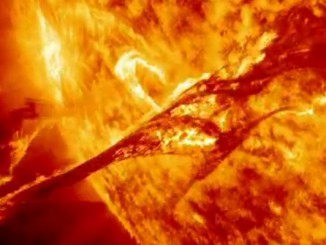By going over old data collected by the Voyager 2 spacecraft in 1986, two scientists at NASA’s Goddard Space Flight Center have made the startling discovery that Uranus’ atmosphere is gradually escaping into space.
When Voyager 2 flew within 82,000 kilometres of the ice giant Uranus on 24 January 1986, the reaction back on Earth was one of disappointment. Following the exciting fly-bys of Jupiter and Saturn, with their churning atmospheres, ring systems and moons full of character and surprises, Uranus was bland by comparison. Images showed a featureless, turquoise ball, and gave the impression that the planet was pretty boring.
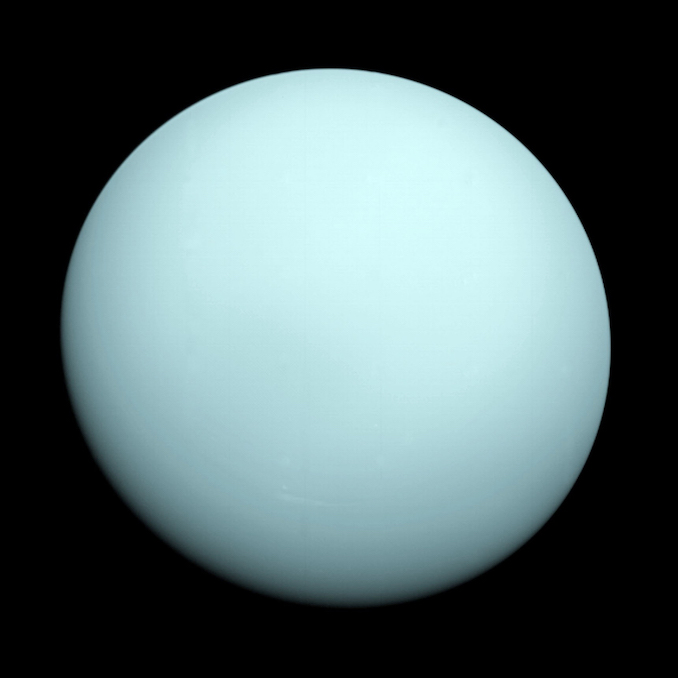
Over the years since, astronomers have been finding that conclusion to have been a mistake. This ice giant – its atmosphere composed mainly of hydrogen and helium but with copious amounts of ‘ices’ including ammonia, methane and water – is more active than was thought. Its atmosphere exhibits bands and storms, particularly when viewed in infrared light, and its rotation is unique in the Solar System: it rotates on its side, with its poles tipped over by almost 98 degrees to the vertical (relative to the ecliptic plane). This results in some interesting atmospheric disturbances as the seasons change. Furthermore, because Uranus’ magnetic field is tilted 60 degrees away from the planet’s spin-axis, it means that the magnetic field appears to wobble as the planet rotates every 17 hours and 14 minutes, making it very difficult for scientists to decipher.
Consequently, as Voyager 2 passed close to Uranus all those years ago, one of its tasks was to carefully measure Uranus’ magnetic field. Now, Goddard’s Gina DiBraccio and Dan Gershman have reanalysed those magnetometer observations at greater fidelity than ever before, marking new data points ever 1.92 seconds. They found a hitherto unseen spike in the data, which lasted just 60 seconds: evidence for a phenomenon called a ‘plasmoid’.
Perhaps we shouldn’t be surprised that Voyager 2 recorded a plasmoid while at Uranus, since they’ve been detected coming from every other planet in the Solar System that has an atmosphere and a magnetic field, but in 1986, plasmoids weren’t really well studied.
A plasmoid is a bubble of plasma, or ionised atoms and molecules, enwrapped by magnetic fields that have been pinched off a planet’s magnetotail, which is the part of a world’s magnetic bubble that sweeps behind it, blown there by the solar wind.
DiBraccio and Gershman think that the plasmoid observed by Voyager 2 was mostly filled with hydrogen ions, and extended 204,000 by 400,000 kilometres in space as it moved away from the planet and Voyager 2 raced through it. What’s more, the magnetometer data indicate that the magnetic fields in the plasmoid were shaped as closed loops. These are typical in plasmoids full of material flung off a planet by its own rotation.
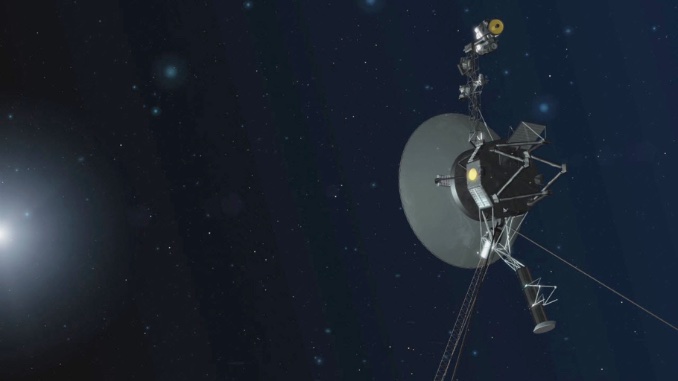
“Centrifugal forces take over, and the plasmoid pinches off,” says Gershman. He and DiBraccio calculate that over half of Uranus’ atmospheric loss (the solar wind also strips some material from the atmosphere) could be the result of plasmoids spun off the planet. However, they admit that such conclusions remain uncertain at this stage.
“Imagine if one spacecraft just flew through this room and tried to characterise the entire Earth,” says DiBraccio. “Obviously it’s not going to show you anything about what the Sahara or Antarctica is like.”
The solution is that we need to go back. DiBraccio and Gershman were studying the old data to help figure out what questions a new mission to Uranus will need to ask. Now we know what one of those questions is, but many others, about Uranus’ interior, its atmosphere, what generates its magnetic field and what tipped the planet on its side, still remain.
DiBraccio and Gershman’s research is published in Geophysical Review Letters.

